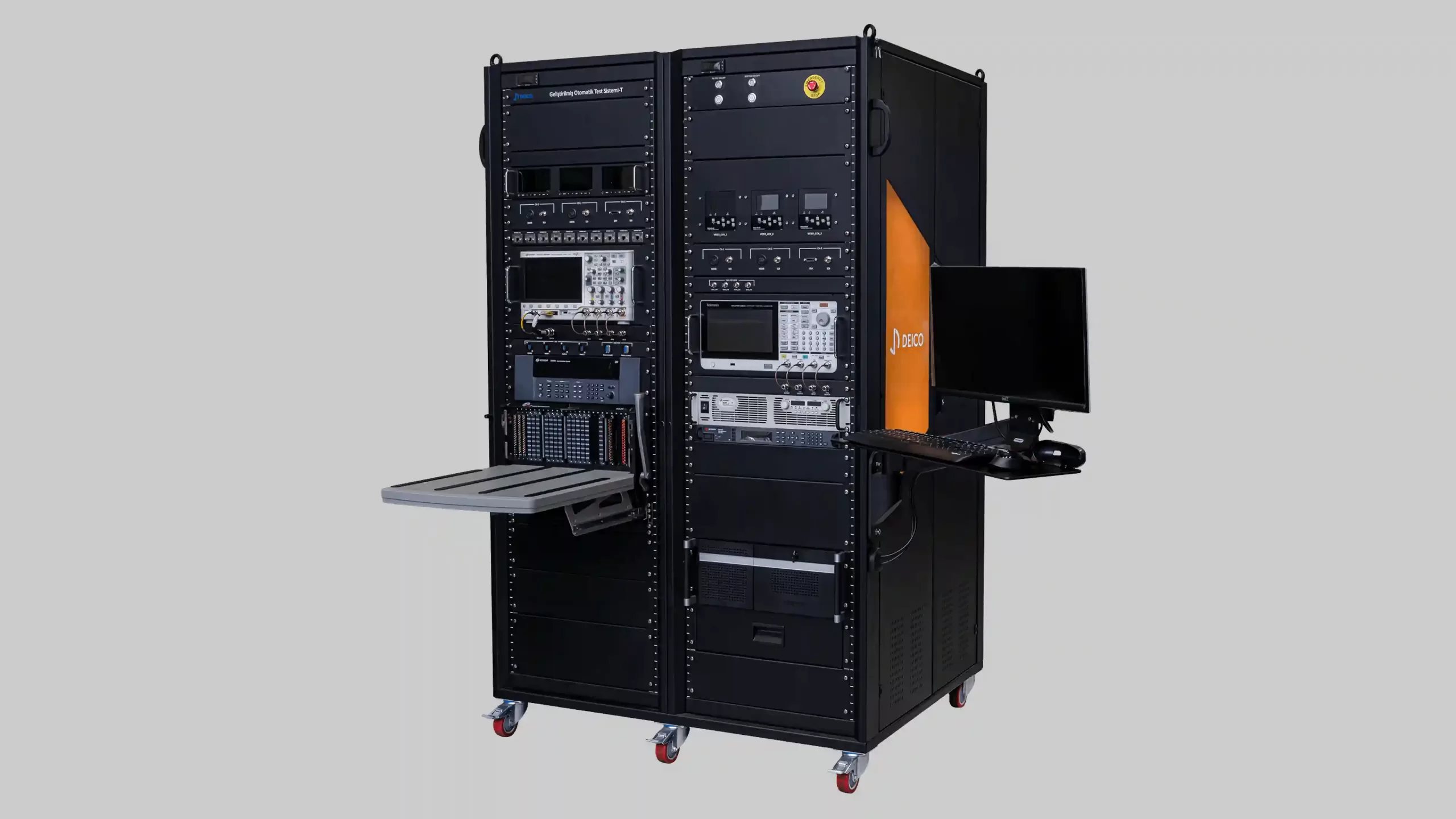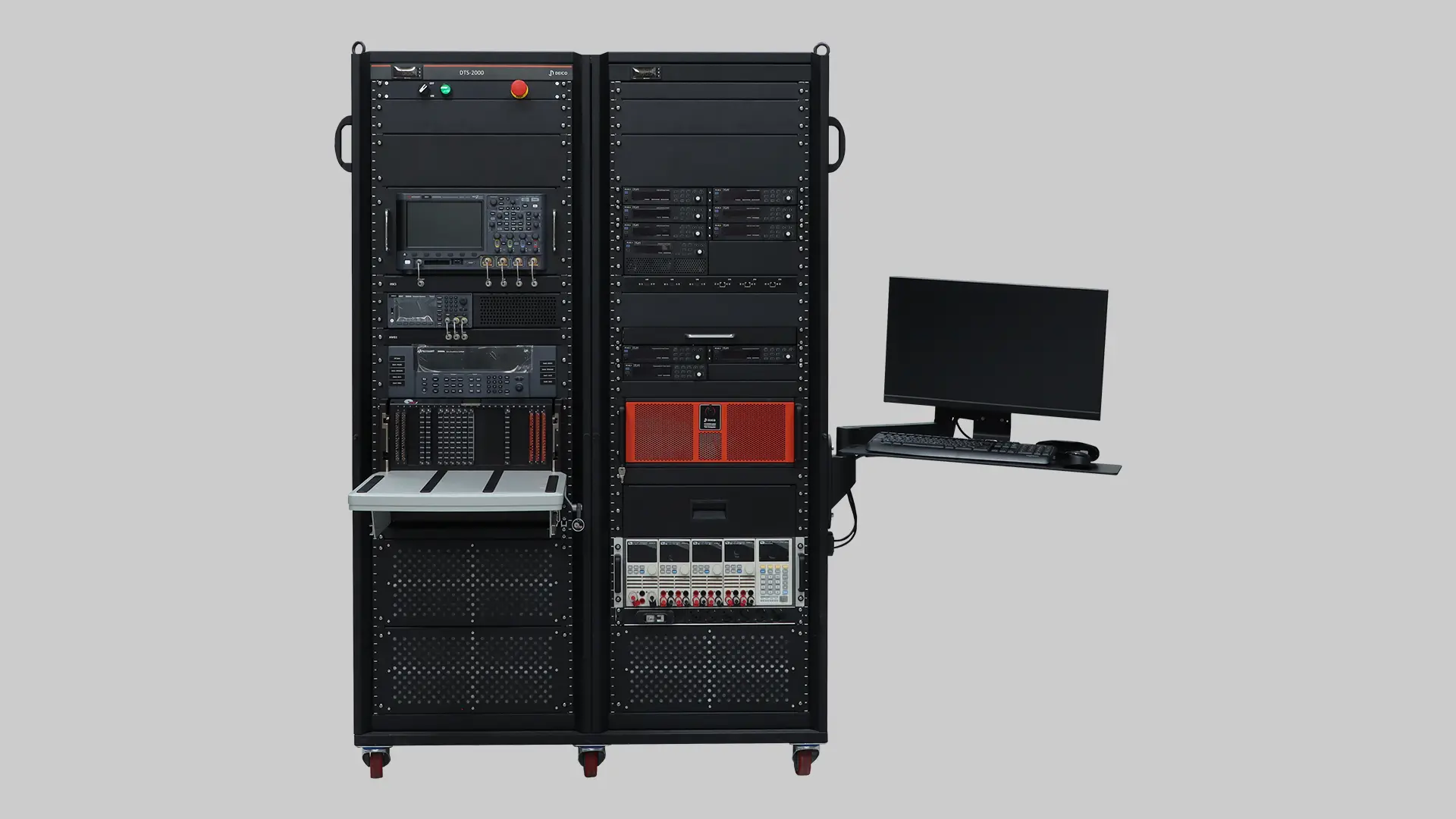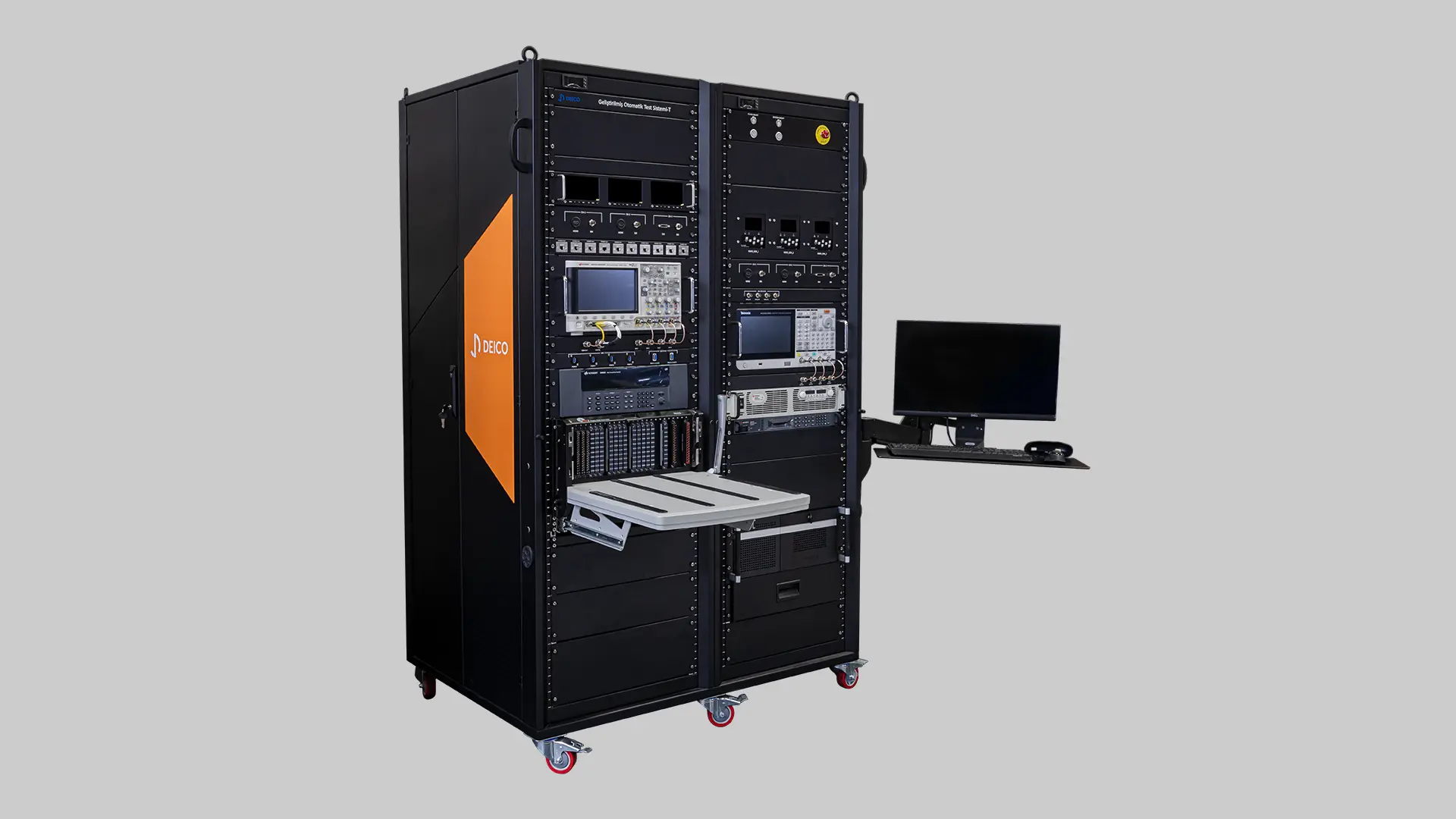Automated Test Equipments
Automated Test Systems (ATE) are designed for efficient and repeatable testing of electronic and mechanical components in defense, aerospace, and industrial environments.
Aerospace
Defense
Industrial

Key Features of ATEs
- Comprehensive Test Support: Covers analog/digital boards, processor-based circuits, and passive components.
- Modular and Scalable Architecture: Expandable and customizable test hardware to meet diverse user requirements.
- High Precision and Accuracy: Advanced measurement and analysis capabilities to detect even the smallest deviations.
- Full Automation: Smart test scenarios that minimize manual intervention and reduce operator dependency.
- Integrated Software Solutions: Robust software infrastructure supporting data analysis, reporting, and remote access.
Applications of ATEs
- Electronic and Mixed-Signal Circuit Testing: Functional and parametric testing of digital, analog, and mixed-signal electronic boards, power modules, and control systems.
High-Speed Data and Communication Interface Testing: Verification of high-speed serial and parallel communication interfaces, including CAN, RS-232/422/485, Ethernet, MIL-STD-1553, and ARINC 429.
- Avionics and Navigation System Validation: Automated testing of flight control computers, GPS/INS navigation units, sensor fusion modules, and avionics bus communication.
- Power and Energy Systems Testing: Load testing and performance validation of power distribution units, energy storage systems, and power conversion circuits.
- Motor, Transmission, and Electromechanical System Testing: Performance validation of motors, actuators, gear systems, and other mechanical components under simulated real-world conditions.
The Core Components of an ATE System
A typical ATE setup consists of:
- Test Controller – A central processing unit that manages test execution and data analysis.
- Instrumentation & Measurement Units – High-precision devices for capturing voltage, current, frequency, and signal integrity.
- Switching & Signal Routing – Modular matrices that dynamically route signals to the Device Under Test (DUT).
- Test Automation Software – A framework for controlling test procedures, data acquisition, and report generation.
Why ATE Is Essential in Modern Testing?
- Speeds up the testing process with automated sequences.
- Ensures consistent and repeatable results, eliminating human error.
- Detects and isolates faults efficiently, reducing troubleshooting time.
- Supports multiple test protocols, including digital, analog, RF, and power electronics.
- Enhances product quality and reliability in aerospace, defense, automotive, and industrial applications.
What is DEICO’s difference in the ATE Solutions?
Our Automated Test System solutions stand out by offering customized designs, high integration capabilities, and software and hardware specifically tailored to industry requirements, providing our customers with a competitive edge. Our Tailored Solutions go beyond standard test systems, ensuring full compatibility with diverse hardware and software needs. With a flexible and modular architecture, our systems can easily adapt to evolving test requirements. Precision and Reliable Measurements maximize efficiency in verification, production, and maintenance processes, while our automation-driven approach reduces test durations and minimizes error margins.
Furthermore, our extensive experience in critical sectors such as defense, aerospace, automotive, and industrial electronics positions us as a trusted partner in testing and validation of complex systems. Our test systems, supported by advanced data analytics and fault detection algorithms, enable predictive maintenance and performance optimization.
Example: DEICO DTS-1000
DTS-1000 – DEICO’s test station provides a versatile solution for various testing applications. The station can be configured to support various DEICO modules and can be used for real-time data acquisition and control applications.
Features
- Testing of MIL-STD-1553, ARINC429, ARINC708 avionic protocols.
RS422/485 series communication infrastructure up to 12 Mbit/s.
RS232 series communication infrastructure up to 1 Mbit/s.
- SPI, I2C, 1-Wire, CAN communication protocols.
- Wide scope video matrix switching and imaging capability with HDMI, DP, VGA, DVI, Component, S-Video, CVBS, and HD-SDI.
Versatile switching capability with various matrix switches and multiplexer modules.
High-capacity AC/DC power supplies and electronic load modules.
- RF and general-purpose switching capability.
User-friendly connection interface.
Remote control of all test & measurement devices with C/C++, C# and NI Labview.
Boundary scan test capability.
Automatic self-test capability.


